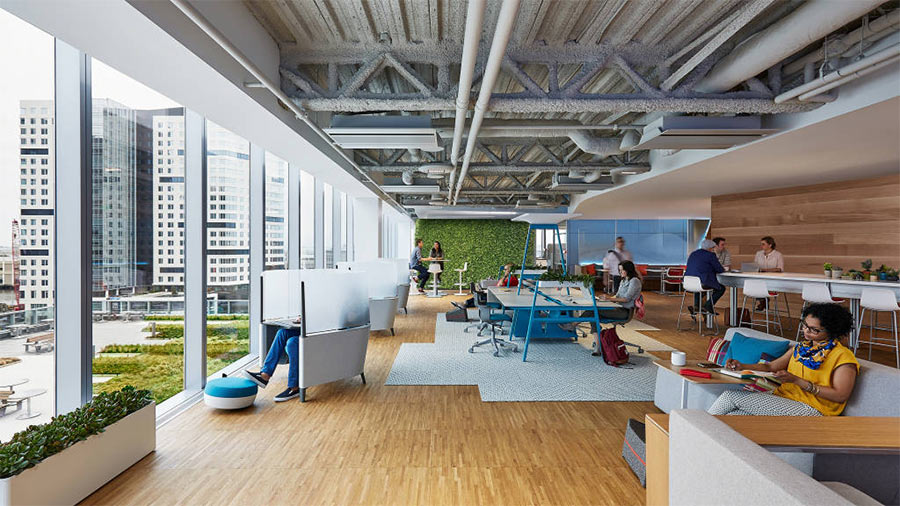
Contents
Introduction
Collaborative workspaces in smart buildings have emerged as a new paradigm in the modern workplace. This article explores the definition and importance of collaborative workspaces and provides an overview of the article structure.
Historical Background
The evolution of collaborative workspaces can be traced back to the changing dynamics of the workplace. With the advent of smart buildings, workspaces have undergone a significant transformation in terms of design and functionality.
Key Concepts and Definitions
Collaborative workspaces are defined by their characteristics that promote interaction, communication, and collaboration among employees. These spaces offer numerous benefits, including increased creativity, productivity, and employee satisfaction. On the other hand, smart buildings are equipped with advanced technologies that enhance the overall efficiency and functionality of workspaces.
Main Discussion Points
Design and Layout of Collaborative Workspaces in Smart Buildings
Open floor plans and flexible furniture arrangements are key design elements of collaborative workspaces in smart buildings. These layouts facilitate collaboration and teamwork among employees. Additionally, the integration of technology, such as smart whiteboards and interactive displays, enables seamless collaboration. Informal meeting spaces and breakout areas provide employees with opportunities for spontaneous discussions and idea generation.
Technology and Tools for Collaborative Workspaces in Smart Buildings
Internet of Things (IoT) devices and sensors play a crucial role in creating smart collaborative workspaces. These devices enable real-time data collection, analysis, and automation, resulting in improved efficiency and productivity. Smart whiteboards and interactive displays allow for digital collaboration, enabling employees to share ideas and work on projects together. Virtual reality (VR) and augmented reality (AR) technologies further enhance remote collaboration, allowing team members to work together regardless of physical location.
Benefits and Impacts of Collaborative Workspaces in Smart Buildings
Collaborative workspaces in smart buildings offer several benefits. Firstly, they enhance productivity and creativity by fostering collaboration and idea generation. Secondly, communication and collaboration among team members are improved, leading to better decision-making and problem-solving. Finally, efficient space utilization in smart buildings results in cost savings for organizations.
Case Studies or Examples
A leading technology firm transformed its workspace into a collaborative environment within a smart building. By implementing smart technology and design principles, the company witnessed increased employee satisfaction, improved collaboration, and higher productivity. A university also embraced a smart classroom design for collaborative learning, resulting in improved student engagement, enhanced learning experiences, and positive feedback.
Current Trends or Developments
The adoption of remote work has accelerated the need for virtual collaboration tools in smart buildings. Additionally, the integration of artificial intelligence (AI)-powered technologies is revolutionizing smart buildings, making them more efficient and intelligent. Sustainability and energy efficiency have also become key focuses in collaborative workspaces, with organizations striving for eco-friendly solutions.
Challenges or Controversies
Privacy and security concerns are prevalent in smart buildings, as the integration of technology raises questions about data collection and protection. The resistance to change and cultural shifts in traditional workspaces also pose challenges in the implementation of collaborative workspaces. Moreover, equity and accessibility considerations need to be addressed to ensure inclusivity in these workspaces.
Future Outlook
The future of collaborative workspaces in smart buildings is promising. The increasing integration of AI and automation will further enhance productivity and efficiency. Personalization and customization will become key features, allowing employees to tailor their workspaces to their specific needs. This paradigm shift may also impact urban planning and architecture as smart buildings become more prevalent.
Conclusion
Collaborative workspaces in smart buildings offer numerous benefits and have the potential to reshape the modern workplace. The importance of implementing such workspaces is evident in the positive impacts they have on productivity, creativity, and employee satisfaction. Further research and implementation are necessary to fully leverage the potential of collaborative workspaces in smart buildings.